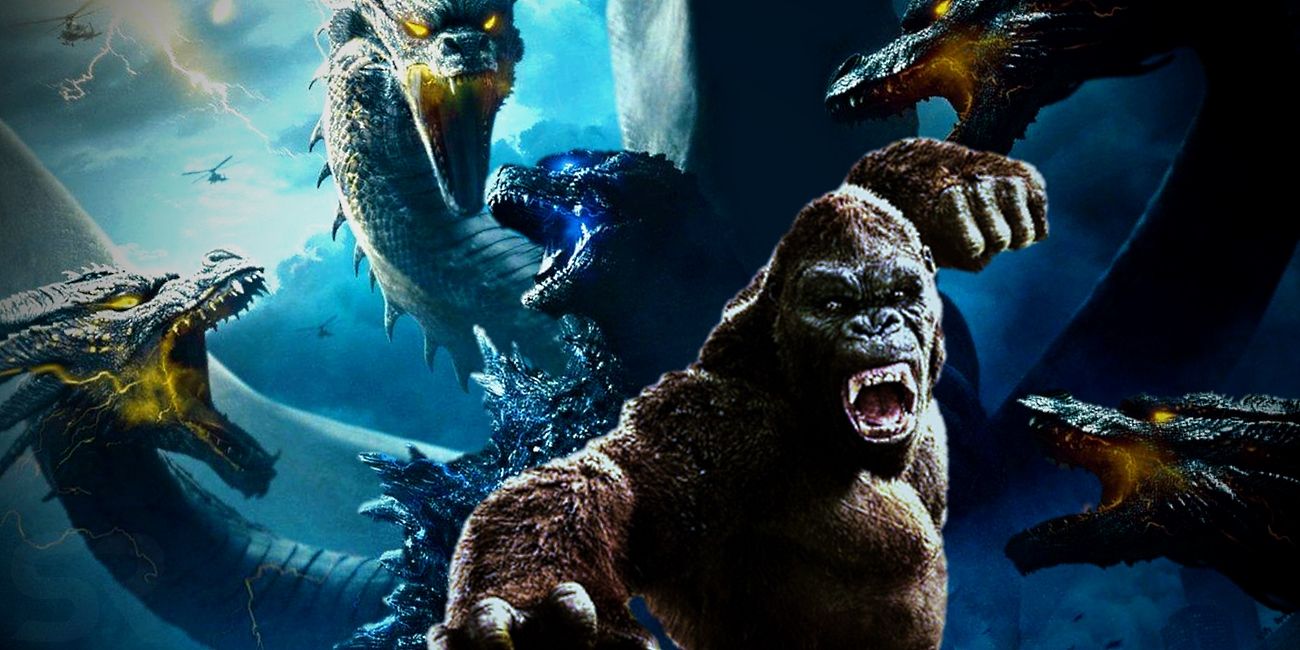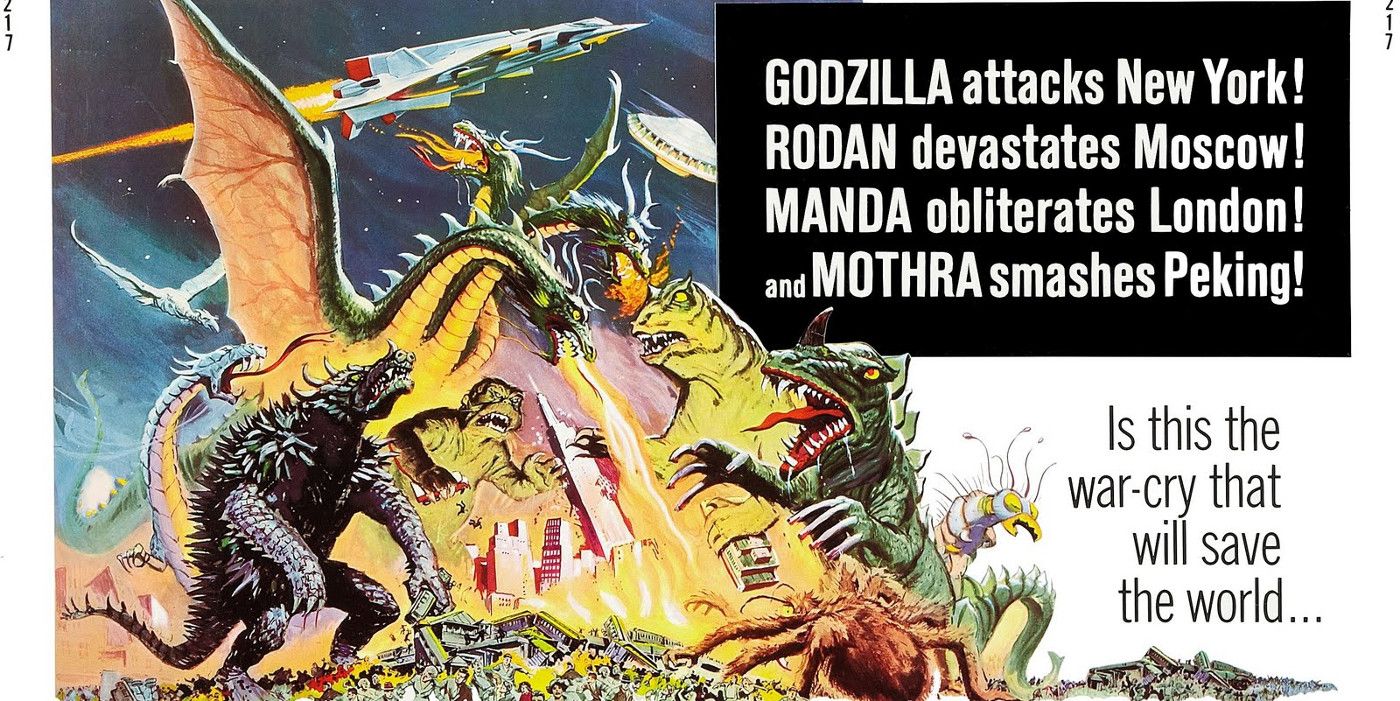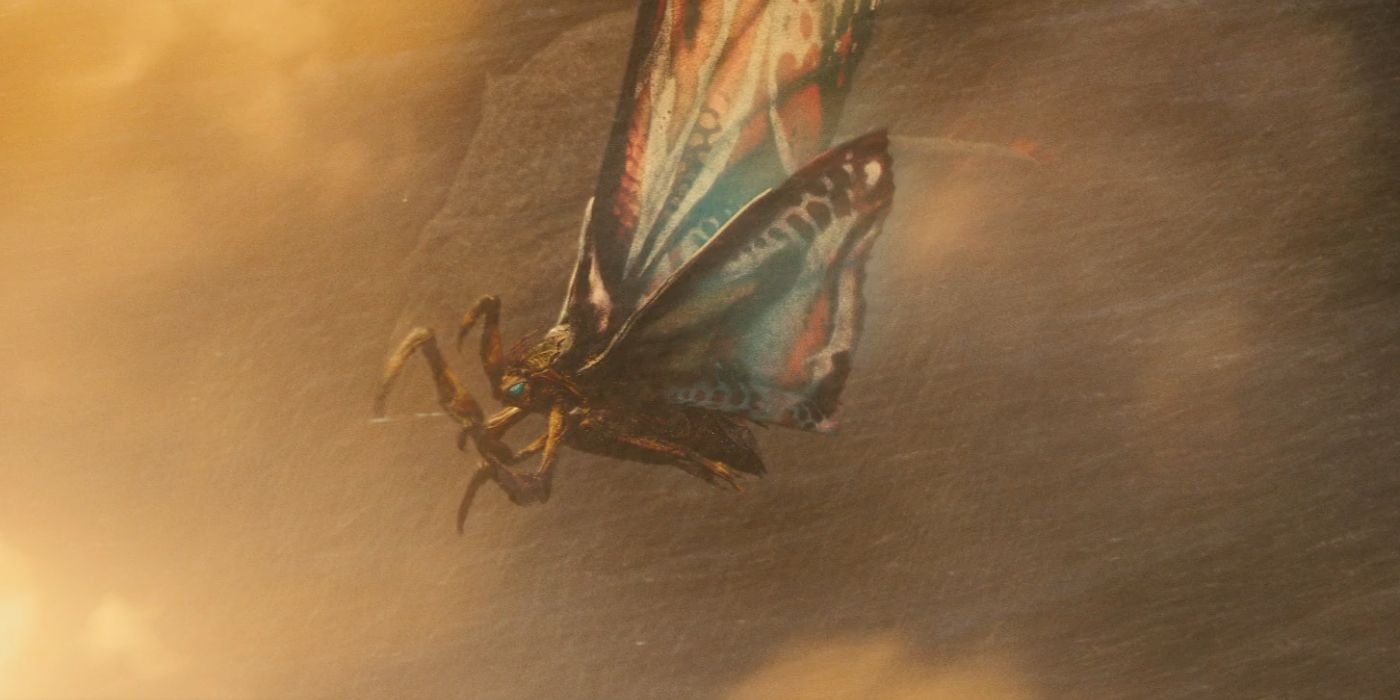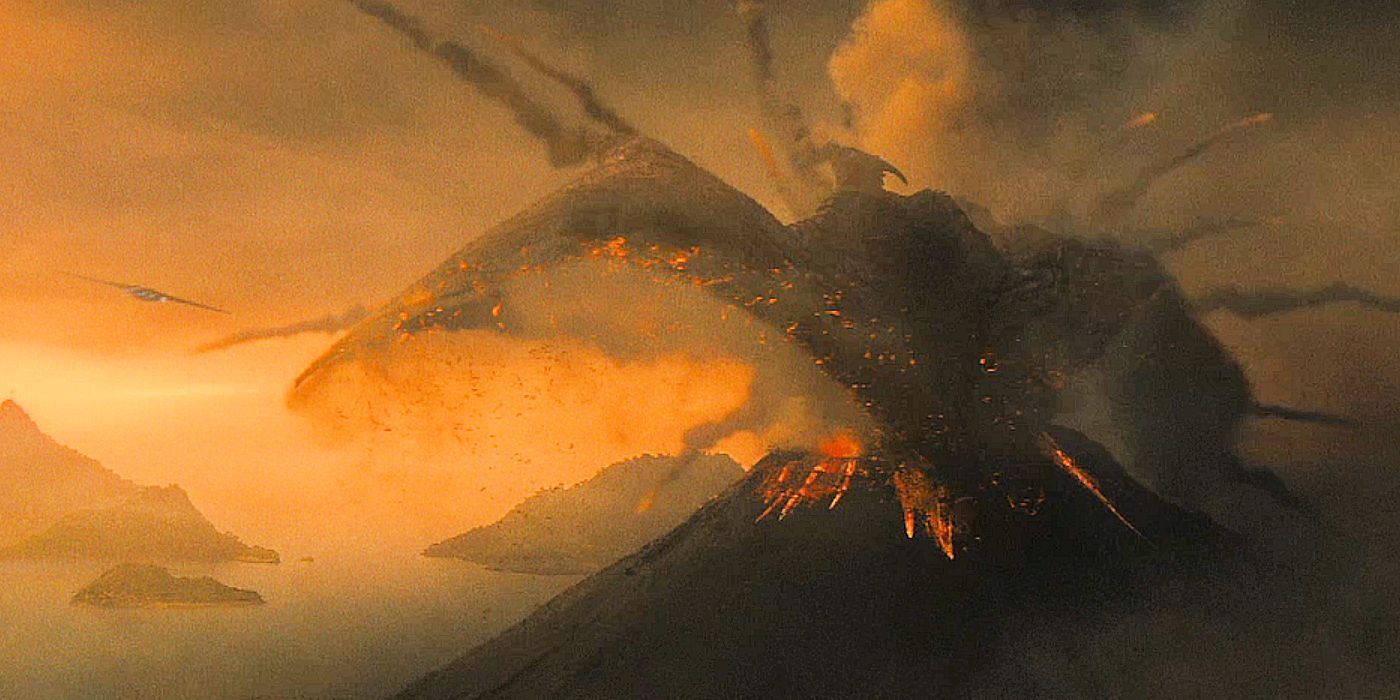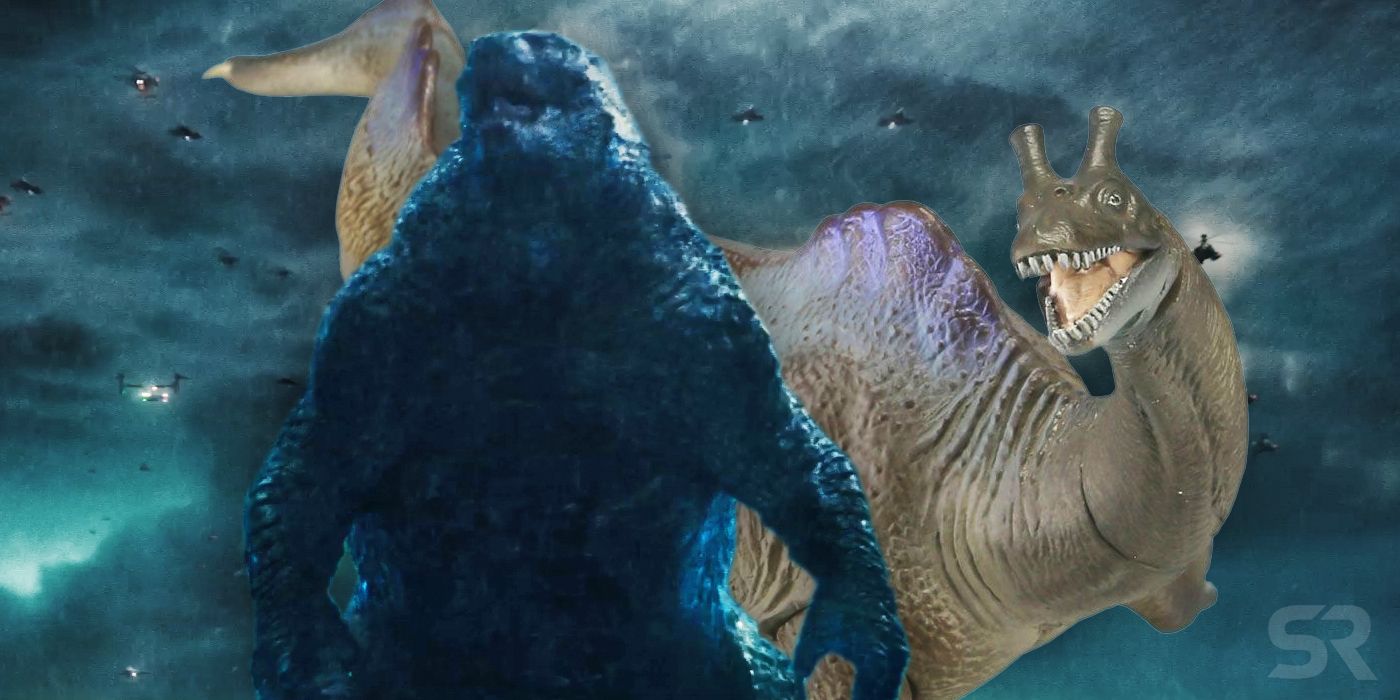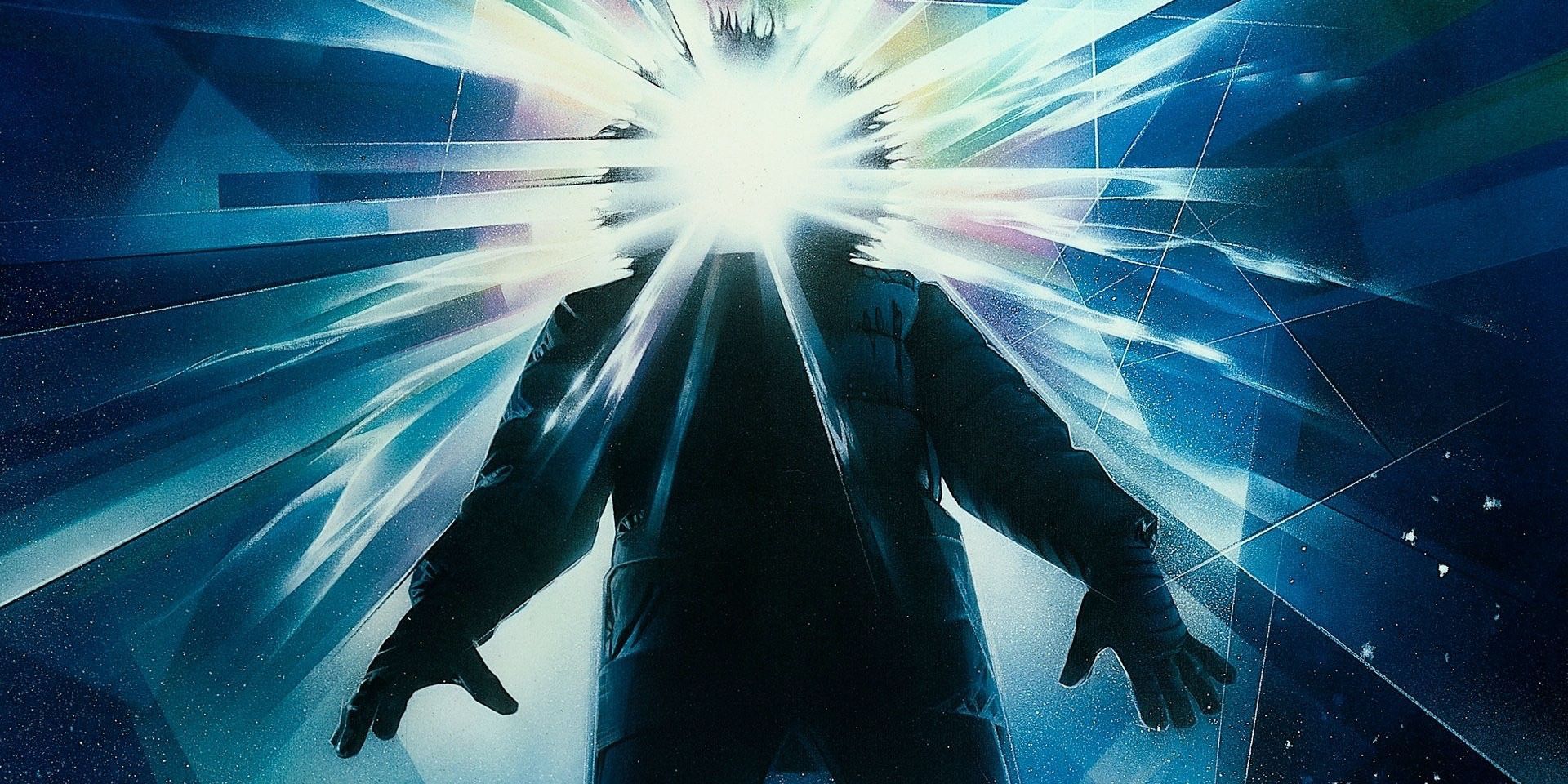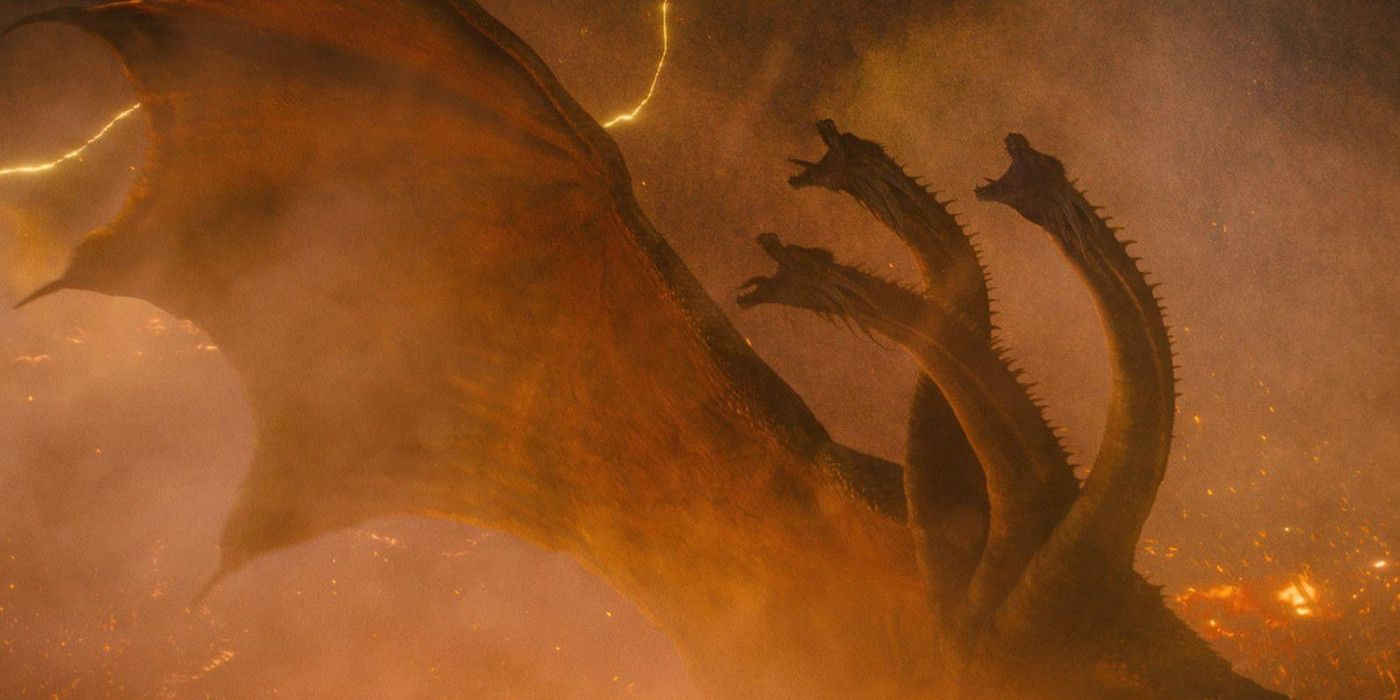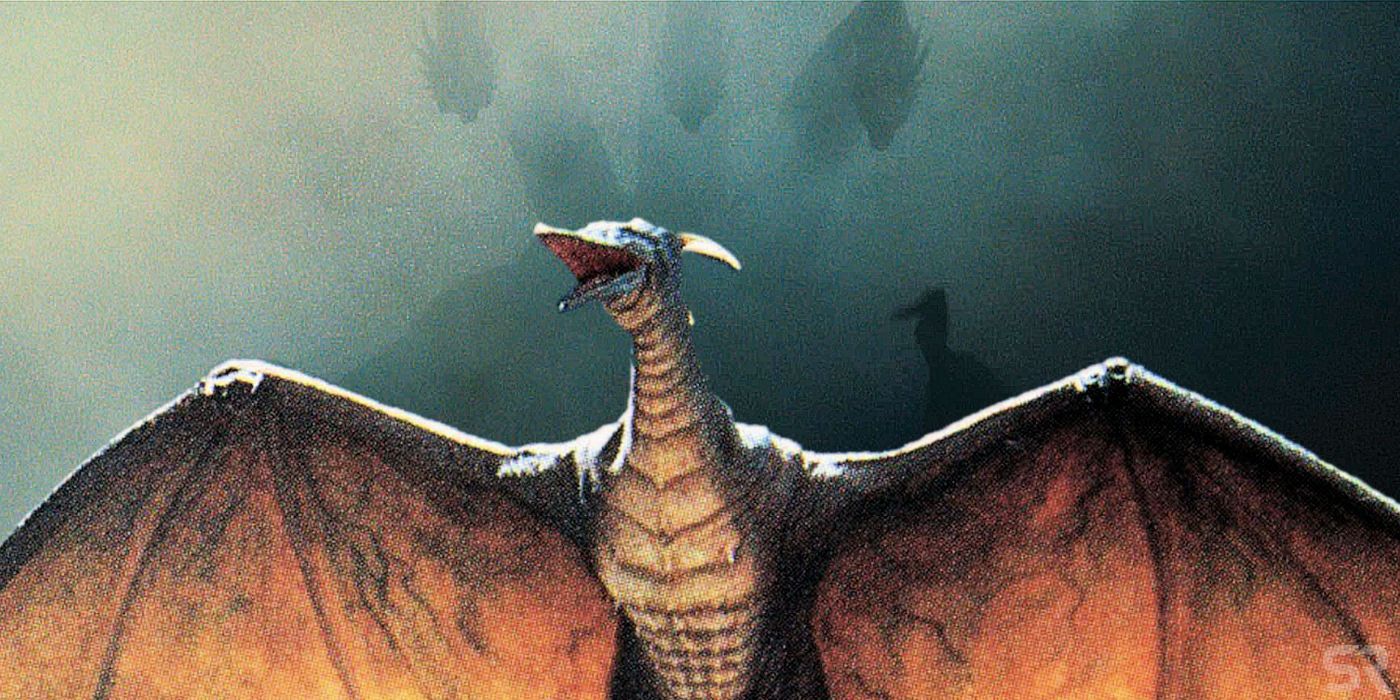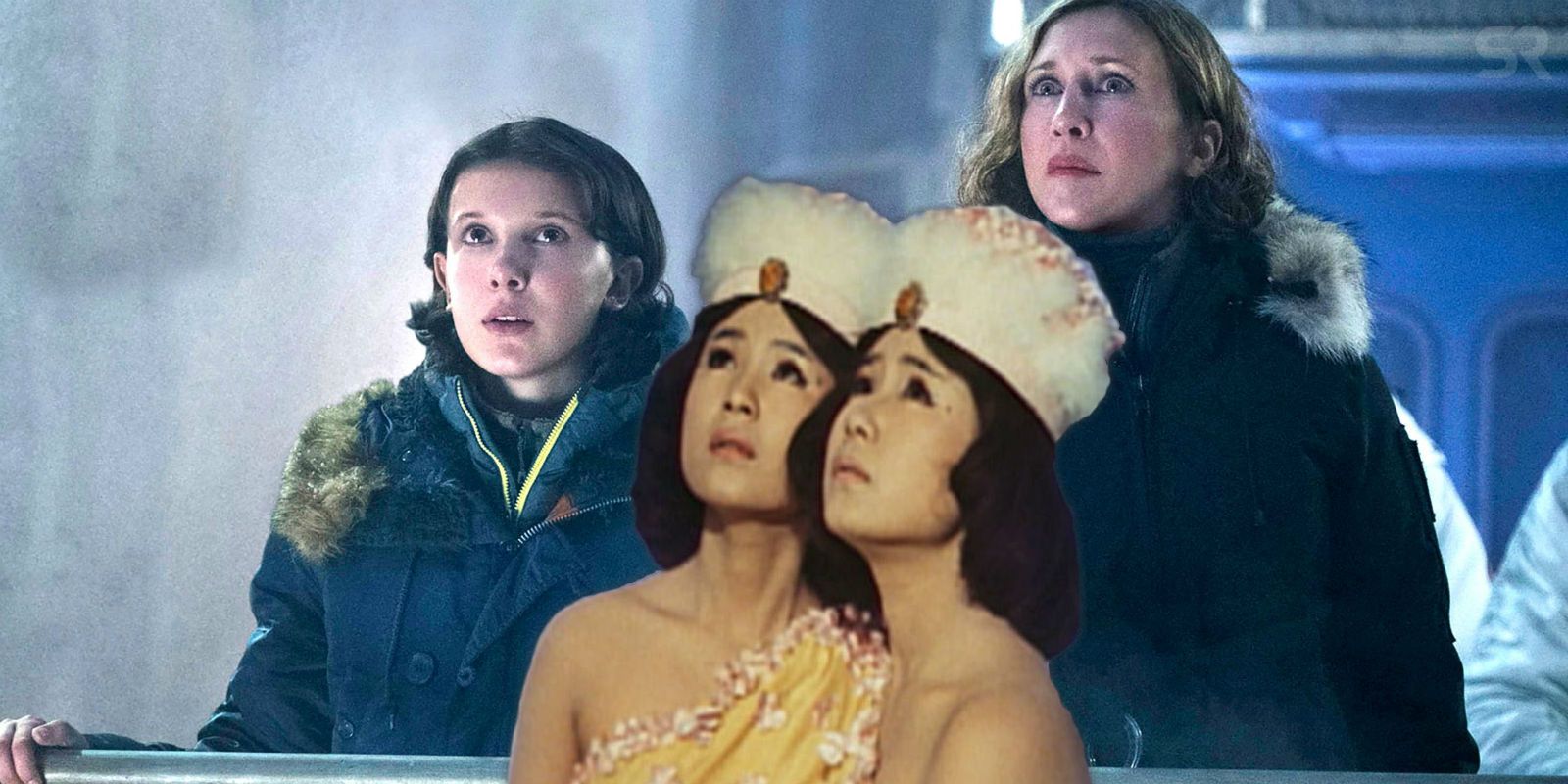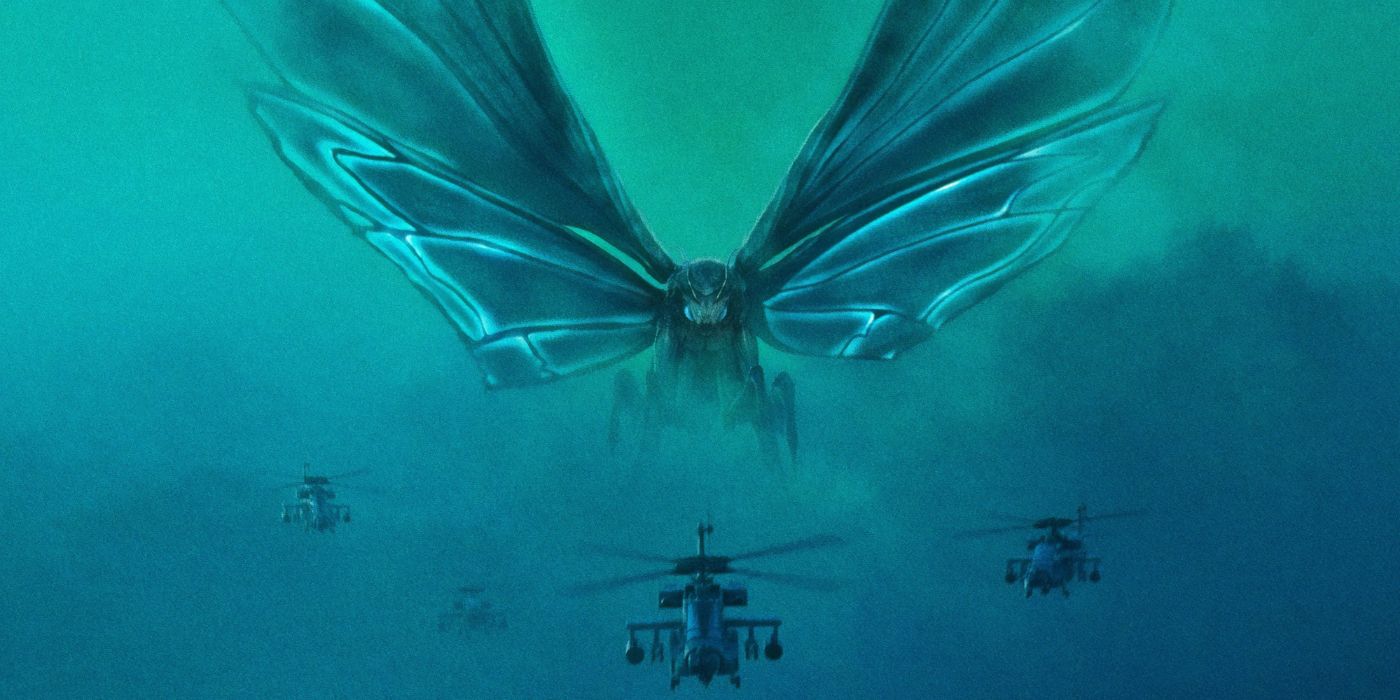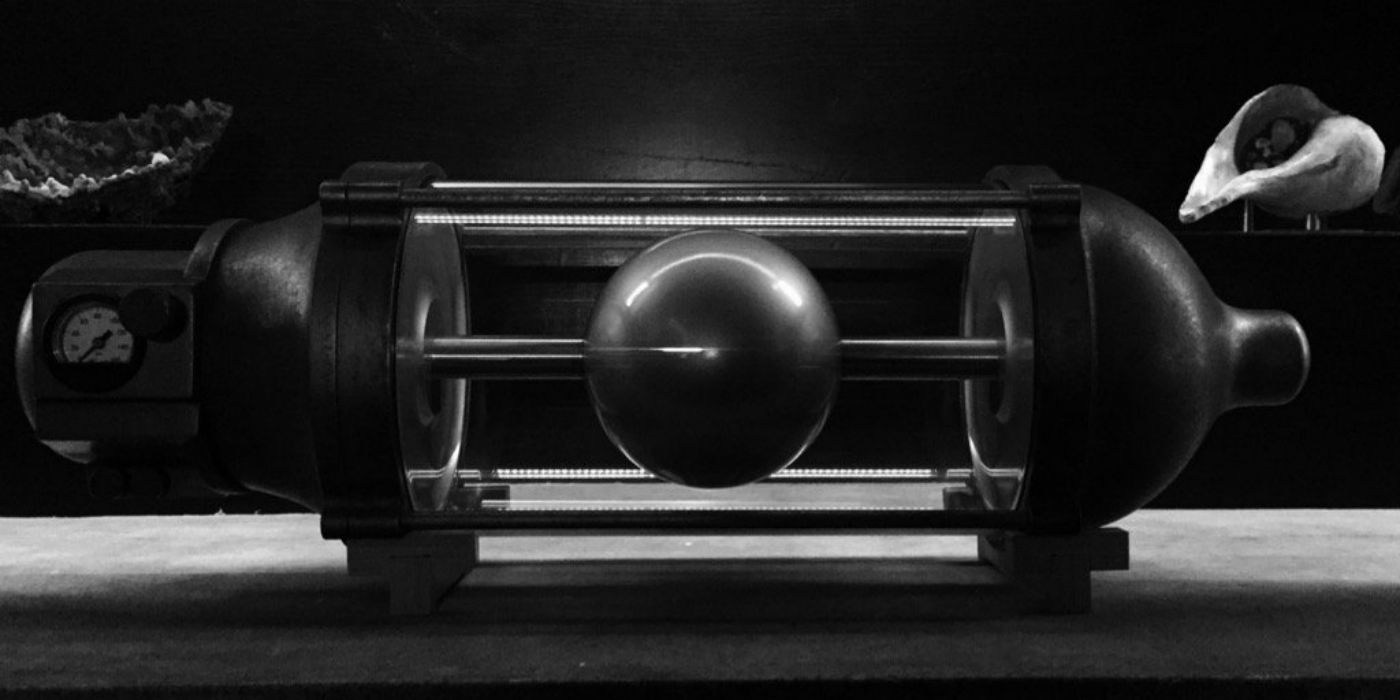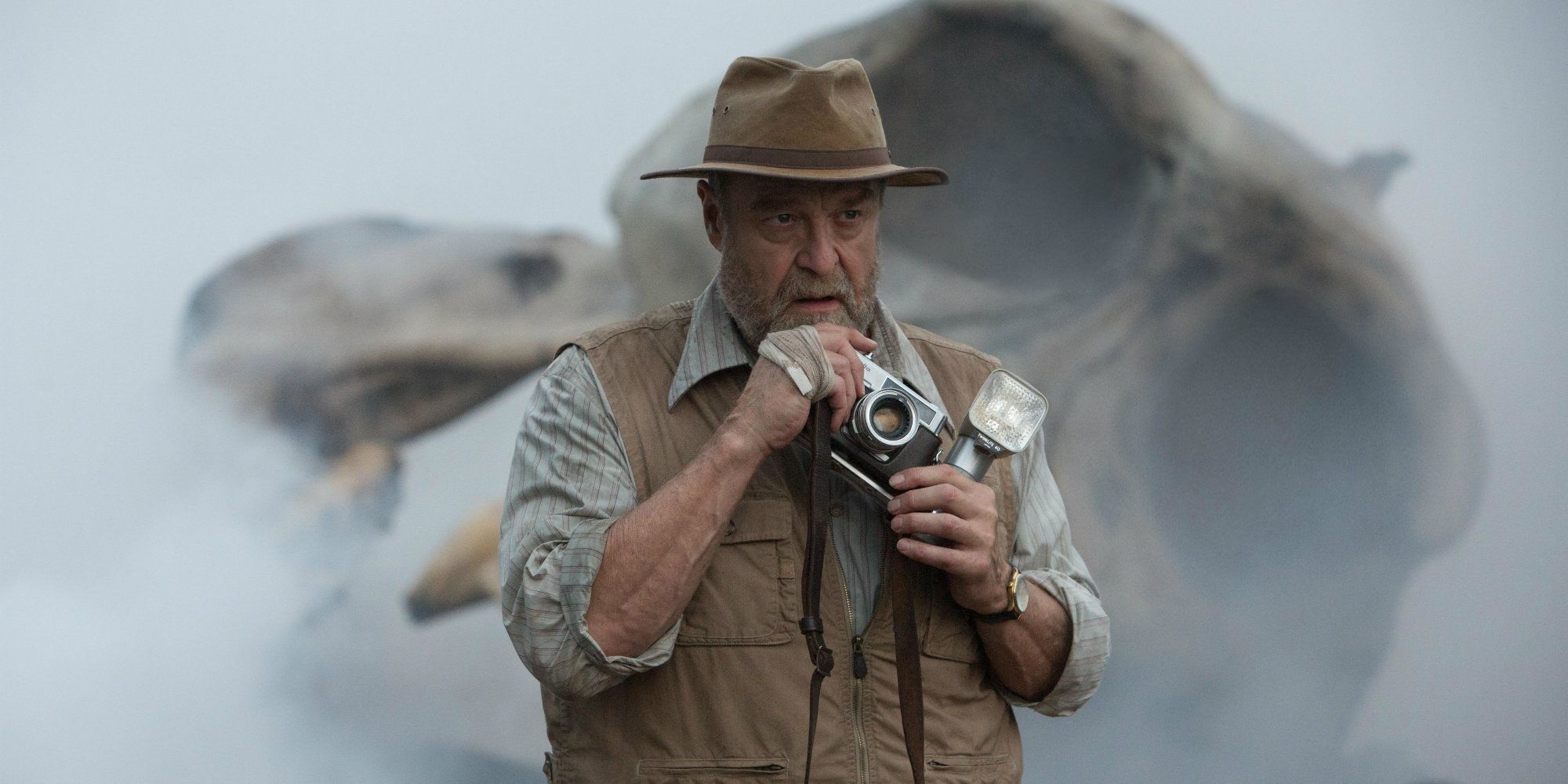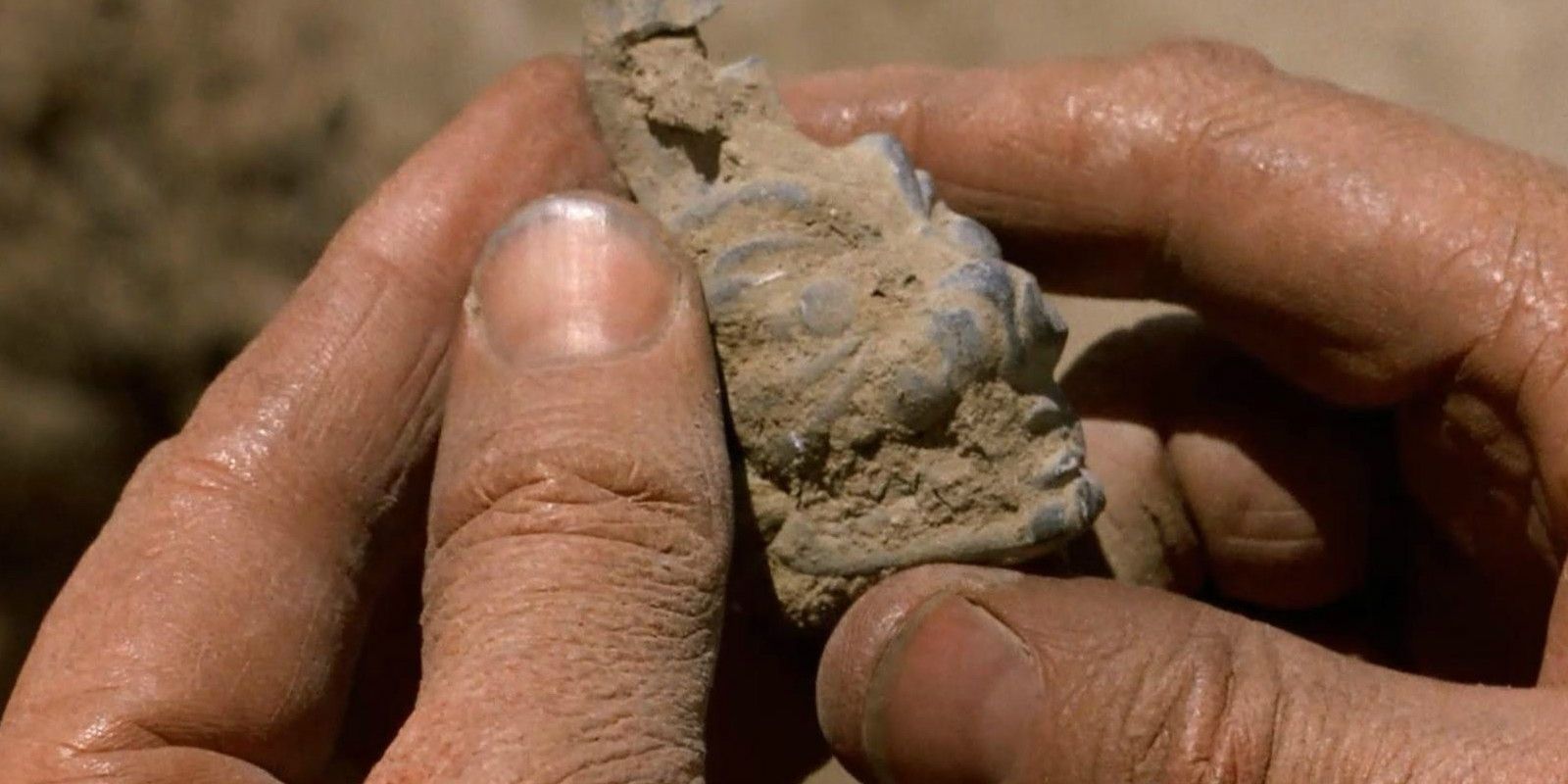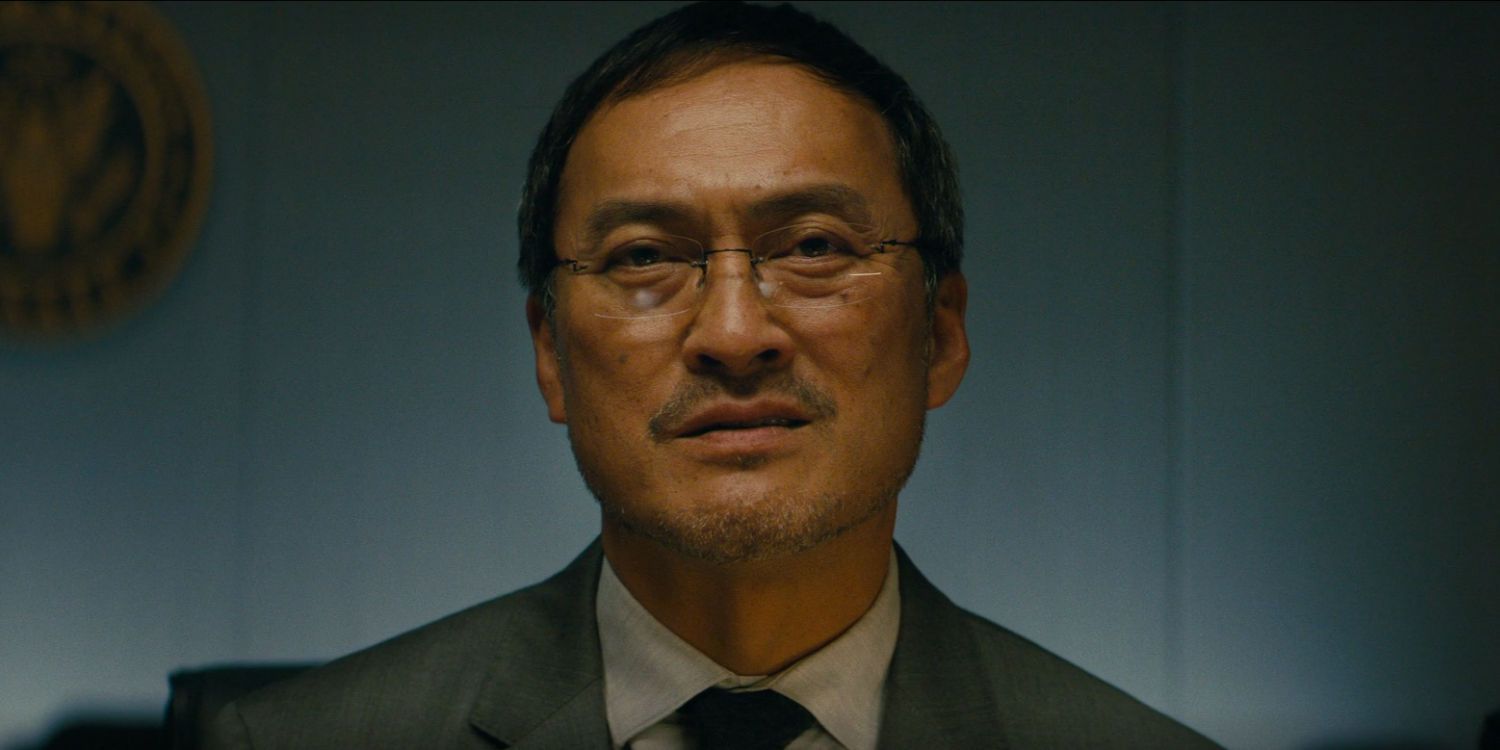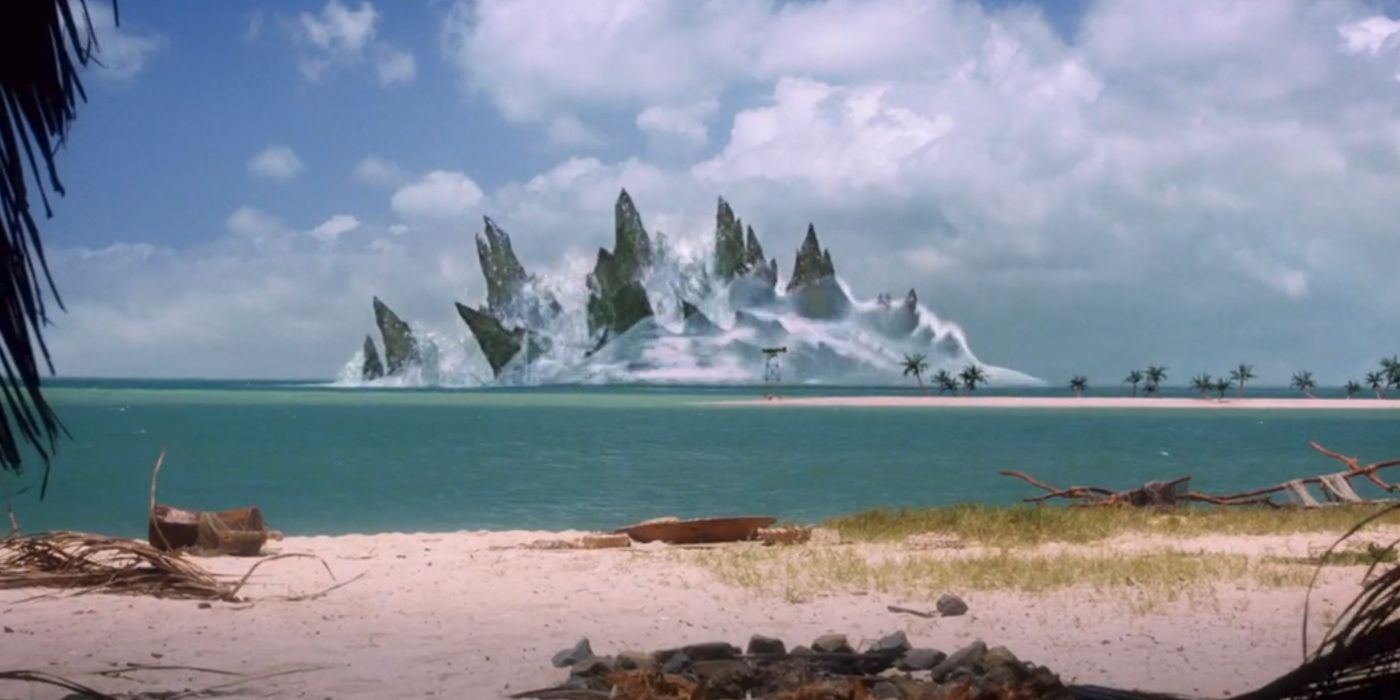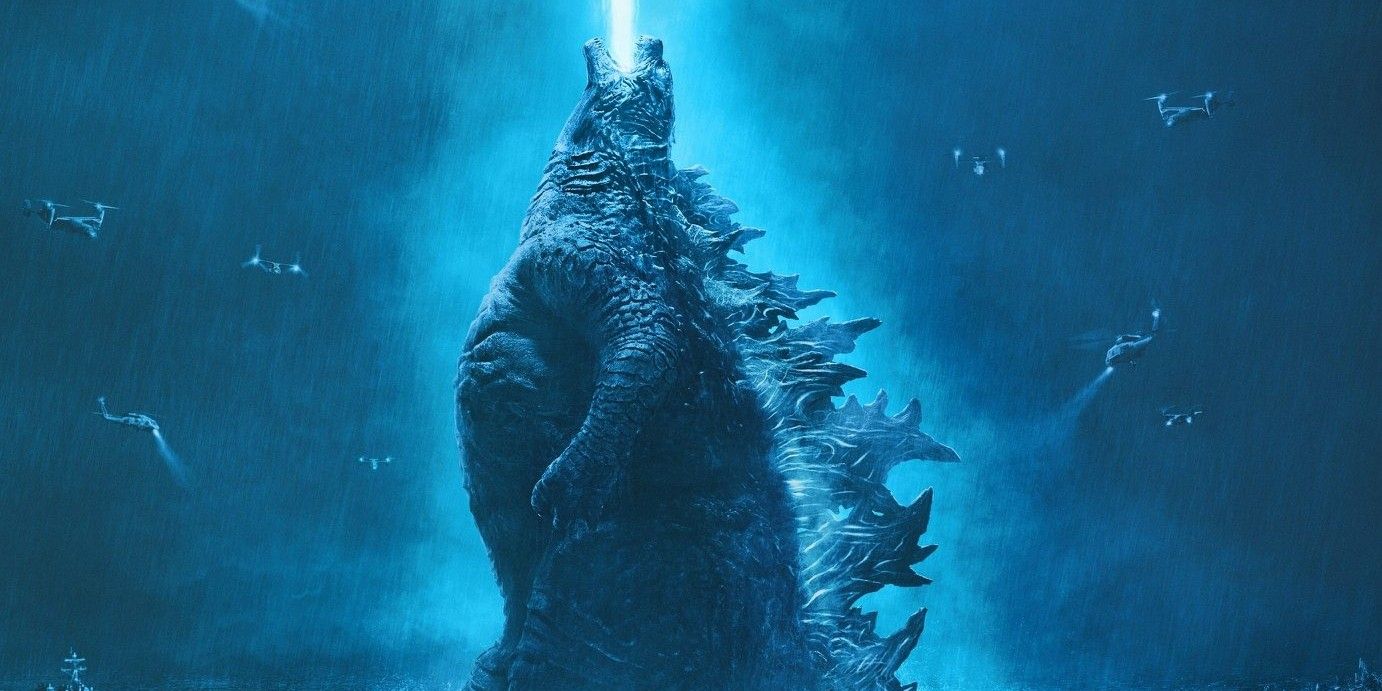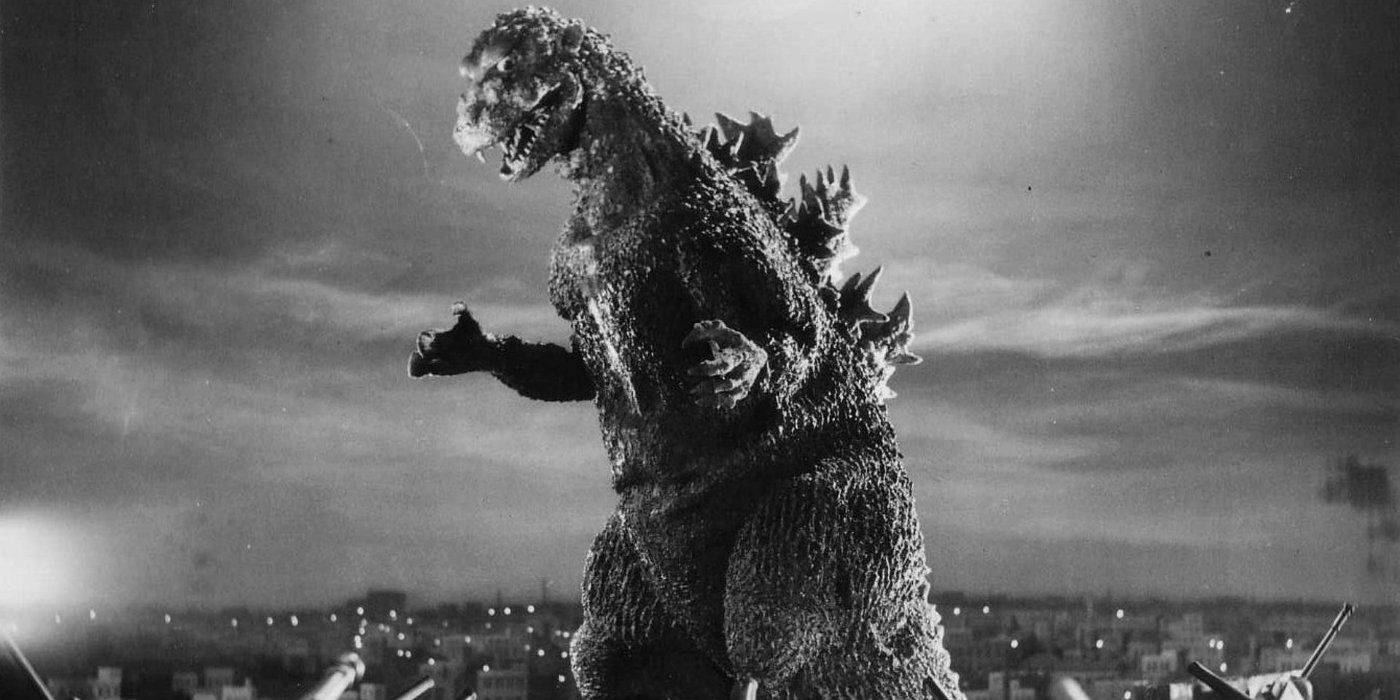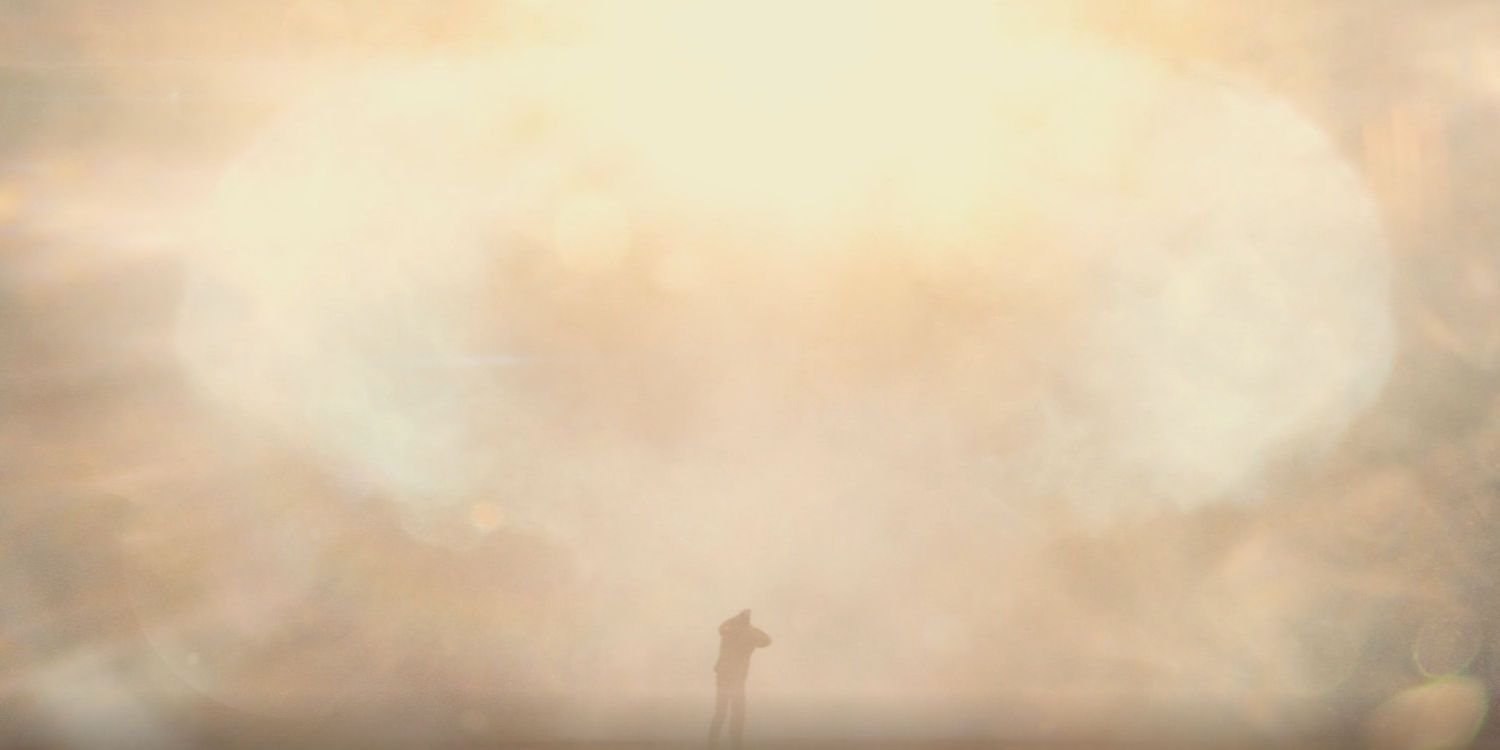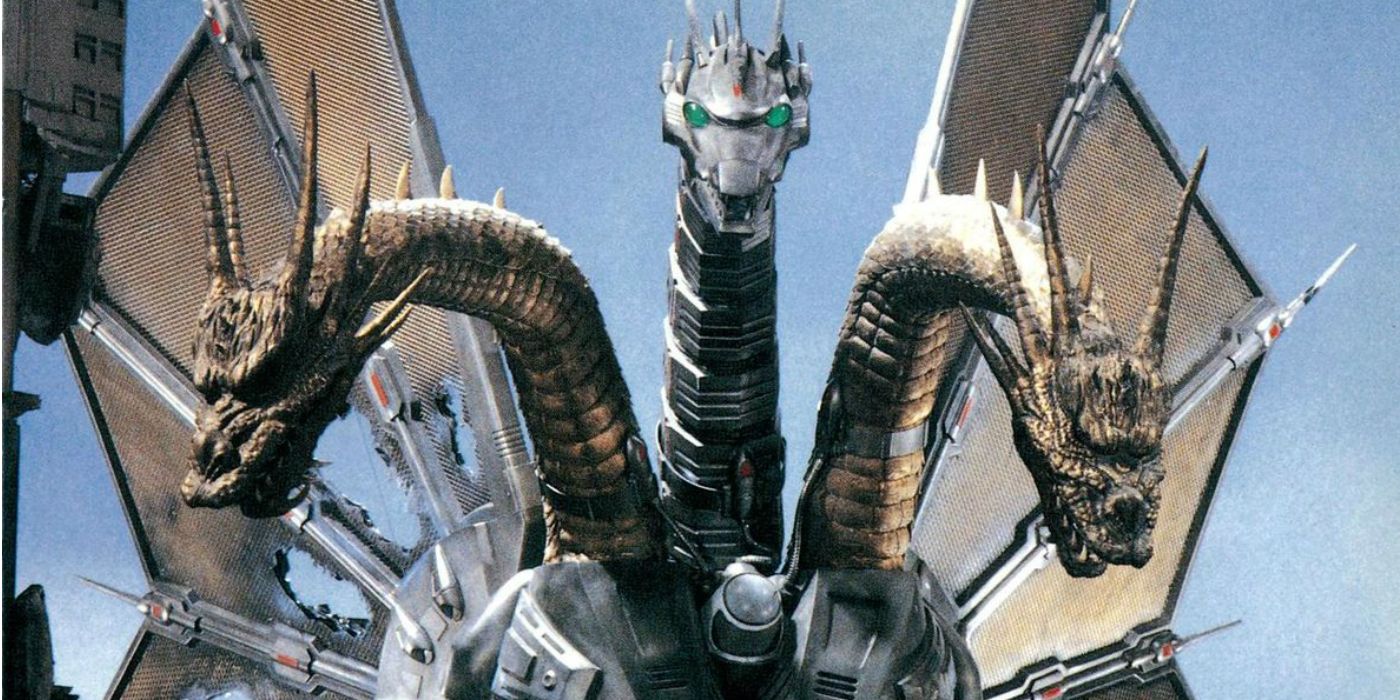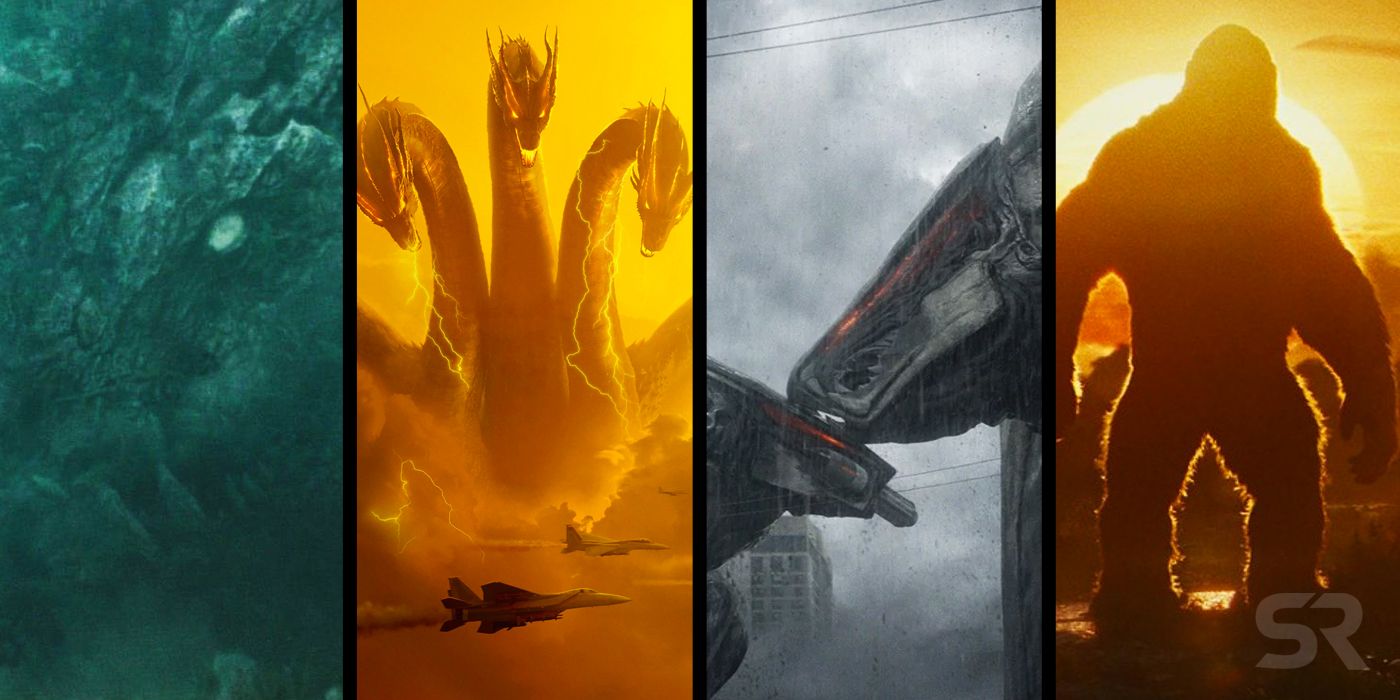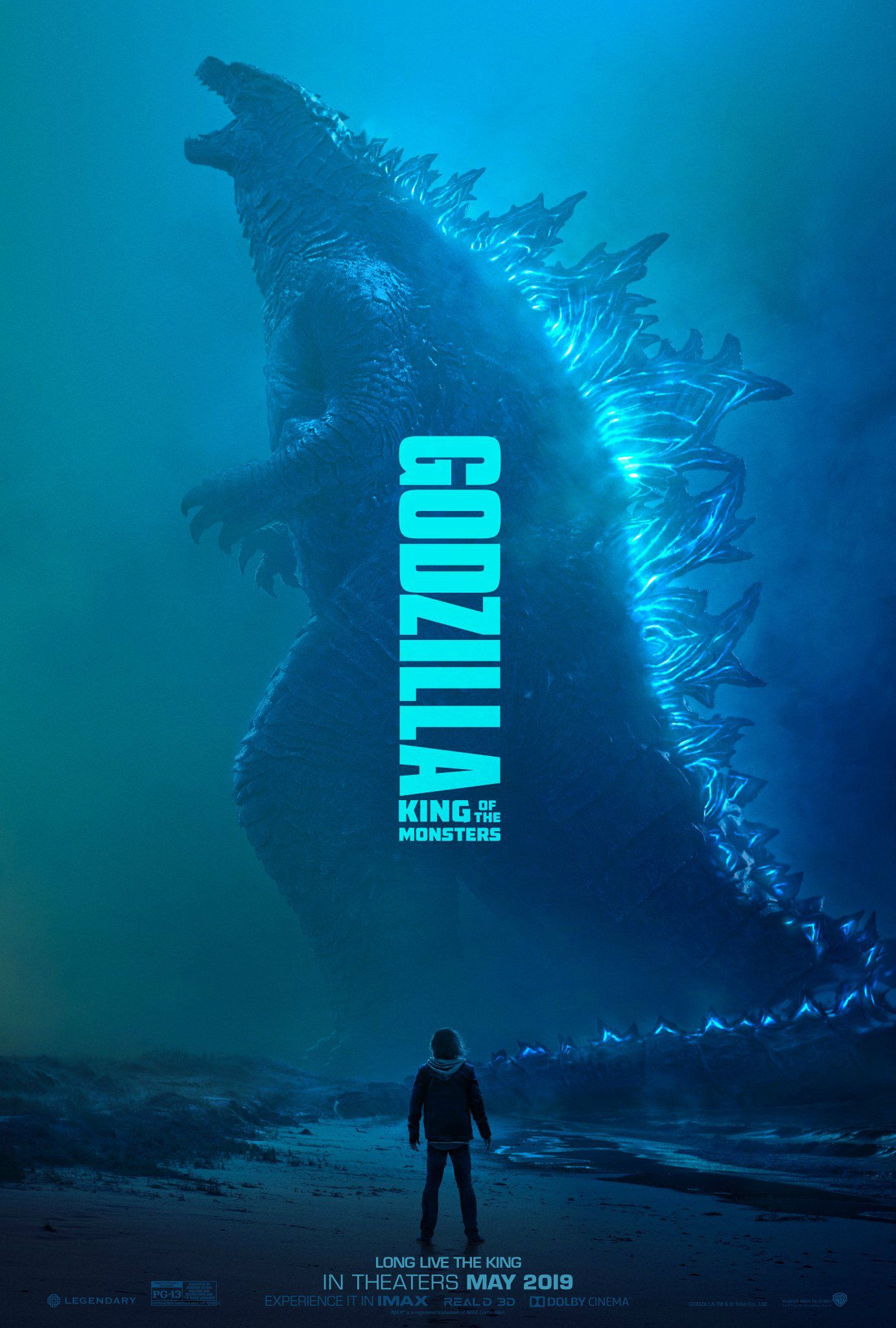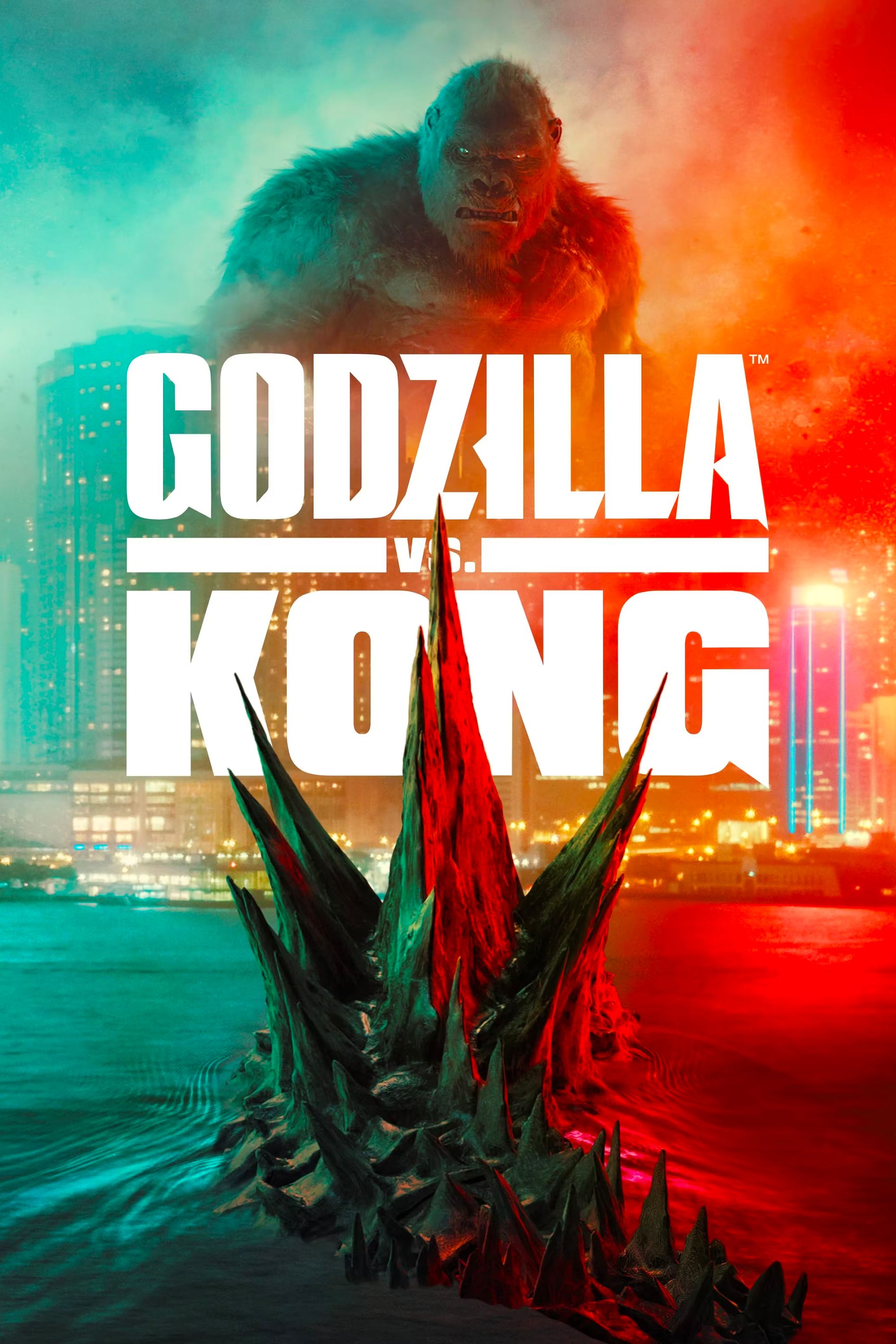Warning: SPOILERS for Godzilla: King of the Monsters
The biggest battle in Earth's history has arrived in the form of Godzilla: King of the Monsters. After introducing the world to Godzilla, and setting the stage for his ultimate crossover in Godzilla vs. Kong, it's time for the famous lizard to show why he wears the kaiju crown.
It's an all-out celebration for fans, with King of the Monsters filled from beginning to end with Easter Eggs, homages to cinematic classics, and too many references to the original Toho monster movies for any fan to possibly catch in a single viewing. The modern version may be the biggest and baddest Godzilla ever, but the addition of Mothra, Rodan, and King Ghidorah has blown the doors of fan service wide open (and that's even before Godzilla: King of the Monsters' post-credits scenes). Audiences don't need to watch the thirty Godzilla movies and Toho hits to appreciate every Easter Egg, inside joke, and incredible details... because we're here to help.
There's a half-century of Godzilla lore to draw from, but we'll still give one final SPOILER warning before getting started. Time to break down the Godzilla: King of the Monsters Easter Eggs & References.
20. "Destroy All Monsters!"
Long before the Avengers or the Marvel Cinematic Universe, there was the world of kaiju created by Toho. After introducing several monsters one by one, or having them butt heads as opponents and rivals, the gloves came completely off for a world-shattering collision of Godzilla, Rodan, Mothra, and King Ghidorah in the ensemble film, appropriately titled Destroy All Monsters . And just like the newest team-up, the 1968 movie had the towering titans clear their minds, and unite in force against the villainous Ghidorah.
The similarity is no coincidence, as demonstrators can be seen early on in Godzilla: King of the Monsters holding picket signs and calling for this new threat to be dealt with quickly and completely. And in a moment sure to delight ever Toho fan, one demonstrator has reduced their argument to a single phrase: "Destroy All Monsters!"
19. Codename: Mosura
In hindsight, the name given to the gigantic, moth-like titan--Mothra--makes a lot more sense than the one given to the star of the show, Godzilla. A literal explanation for the original Japanese name is actually a bit more difficult. All we can say for certain is that the Japanese name of the massive, not-so-villainous kaiju is that its name "Mosura" is based on the name of Toho's original star, "Gojira." Whether or not Gojira's name was influenced by "gorira" (for gorilla) or solely "kujira" for "whale," the idea was to communicate to audiences the sheer size of the original giant, walking lizard.
That's the naming convention that Mosura was titled to match when the kaiju appeared in its own film in 1961, before taking on Godzilla three years later. No matter how unclear the meanings behind the Japanese and American versions of the creatures may be, the new Godzilla: King of the Monsters pays homage by showing Mothra officially designated as its original title, "Mosura" by Monarch.
18. The Volcanic Birth of Rodan
Director Michael Dougherty makes sure to give every one of the movies monsters an epic introduction, and Rodan's is no exception. It's a quite a departure from the original appearance of the kaiju, when its own movie revealed that it was likely a prehistoric Pteranadon (Ra-don, changed to the name Rodan for English audiences). That film had Rodan--well, both of the creatures thought to be Rodan--emerge from a cave beneath Mt. Aso, Japan's biggest active volcano.
The end of the movie saw human succeed in bringing down the beasts, causing the volcano to aggressively erupt as a result. Rodan was swallowed up by the lava and thought to be dead (until later appearances in Toho movies). This time around, Rodan is born out of the volcano and lava itself, with its own body taking on qualities of the liquid rock.
17. The Loch Ness Monster is a Kaiju
For obvious reasons, the movie's explanation for monstrous myths opens plenty of doors, revealing that titans are real, and the basis of what we think of as myths of the ancient or even not too dispant past. When the true size and scope of Monarch's monitoring is unveiled, it becomes clear that the group has found evidence of titans (or the creatures themselves) all around the globe... including what appears to be Scotland, focused in on the area surrounding Loch Ness.
Yes, incredible as it may seem, Godzilla: King of the Monsters argues that the Loch Ness Monster may in fact be an ancient kaiju along with Godzilla, Rodan, and the rest of their kind. But before Scottish movie fans get their hopes up for seeing Nessie crash the battle between Godzilla and King Kong, it's clear that Monarch investigates any and all myths and sightings. To the average person, the idea of a giant water monster having survived in secret in Loch Ness is ridiculous. But to an organization monitoring over a dozen? That's a rumor you have to keep an eye on.
16. King Ghidorah AKA 'The Thing'
The sheer number of moments and references made to the long legacy of Toho films proves the filmmakers set out to honor them all. But the homages and nods of fan service extend far beyond the Toho kaiju universe, into the larger world of classic monster movies. The names like Orca and Argo refer to Jaws and Jason and the Argonauts, but one of the easiest to miss is the official designation of King Ghidorah's location in Antarctica.
The spot is categorized in the movie as Monarch Outpost 32. While Ghidorah's first movie was in 1964, not 1932, the number has a fantastic secret meaning. The designation of Outpost 32 raises the question of exactly where Outpost 31 would be located... but those who saw John Carpenter's The Thing know the answer. The seminal horror film took place on Outpost 31, chronicling the terrible dates of everyone unlucky enough to encounter another alien creature thawed from the ice below.
15. King Ghidorah: "Monster Zero"
While the massive three-headed monster may have been found at, apparently, the 32nd outpost Monarch created, it was the one they knew posed the most catastrophic potential for planet Earth. As the apparent basis for countless ancient myths (the Hydra being the most obviously direct inspiration) the Monarch specialists gave it a classification that left little doubt about its place in their catalogue: "Monster Zero."
The title makes perfect sense, whether or not King Ghidorah is a creature born of Earth, or another planet altogether. But it's actually a reference to one of Ghidorah's classic movie plots, seen in 1965's Invasion of Astro-Monster. And while we will admit that "Astro-Monster" is an infinitely cooler codename than "Monster Zero," it would have meant introducing the aliens from Planet X, which might be a bit too much to cram into a movie already filled with titans.
14. The Monster Date Easter Eggs
If fans noted that the official outpost number for King Ghidorah's discovery site is a clever Easter Egg, then they'll expect the same to be true for the other monsters as well. Fortunately, they won't be disappointed. The volcanic resting place of Rodan is officially designated Outpost 56, which is a direct reference to its year of release in 1956 (just two years after the introduction of Godzilla to the world of monster movies).
The discovery of Mothra is similarly accompanied by the creation of Outpost 61, but the extended fiction surrounding the Monarch program's history adds in another bit of detail. Officially, the first marketing image of Mothra claimed that it was part of Monarch's Terrasearch #63061. As fans would guess, June 30th, 1961 (6-30-61) was the date the original Mothra film released.
13. Mothra's Twins, Re-imagined
The religious or mystical elements of the kaiju mythology are obviously given a back seat to the scientific, biological questions about Godzilla, Mothra, Ghidorah, and Rodan (reflecting modern society as much as the original Toho's films did for their own). But one clever remnant of the original Mothra story remains: the godlike being's twin fairies, calling it forth into the world.
In the original films, a pair of identical twins (young women) appeared to summon Mothra with a song. These twins were officially dubbed the shobijin, roughly translating to "little beauties," and new instances carried forward the tradition in the Mothra sequels that followed. The newest movie doesn't have much room to introduce the mythology or worship this time around, but it does reveal that Monarch researcher Ilene Chen (Zhang Ziyi) is one of two identical twin sisters directly tied to Mothra. Perhaps fans simply missed their 'song'?
12. The Famous Mothra Screech
For any movie fan, the idea of asking "what sound does a moth make when it screams?" will garner everything from hilarious, to deeply disturbing responses. But a giant moth like Mothra makes a wide variety of high-pitched squeaks, chirps, and screeches. And as another way of honoring the character's movie history, the diehard fans of Toho's kaiju will instantly recognize the original sound buried within the new Mothra sound suite.
Interestingly enough, Mothra's sounds are believed to be based on the original screams of Anguirus, the massive, dinosaur opponent to Godzilla first seen in Godzilla Raids Again. The movie itself may not be seen as one of the best outings or enemies for the star, but Anguirus's roars--based on a saxophone warble--are hard to forget. Thankfully, speeding them up makes them downright iconic coming out of Mothra's mouth.
11. Future Mythic Titans Being Teased?
The odds of seeing the Loch Ness Monster appear in a future sequel may be slim, but Nessie isn't the only creature design suggested for this movie universe. Fans will need to be eagle-eyed to take in every single codename designation and research site Monarch is monitoring around the world, but a few will be easier to spot. Especially for fans of the world mythology that these very real titans helped to inspire among ancient peoples.
The first is a creature given the codename "Scylla," referencing the creature--well, creatures, we suppose--from Greek mythology. In Homer's The Odyssey, he described Scylla as a land monster one one wide of the Strait of Messina, paired with a killer whirlpool near the opposite coast. Those passing had to choose one threat over the other, and Odysseus lost several men to the six-headed creature. The other creature being monitored is named Quetzalcoatl, referring to the feathered-serpent god found throughout Mesoamerican artwork, architecture, and writings.
10. The Infamous Oxygen Destroyer
By now most Godzilla fans in search of Easter Eggs and homages will know that Dr. Ishiro "Let Them Fight" Serizawa is named for director Ishiro Honda, and ties the character into the oldest Godzilla lore. In the original Honda film, it was Dr. Serizawa (Ishiro's father in this new universe) who devised a devious plan to destroy Godzilla. It involved a device called the Oxygen Destroyer, and it functions almost exactly the same way in the new movie.
But it isn't just the fact that an Oxygen Destroyer almost kills Godzilla for good in King of the Monsters that makes up the tribute. To demonstrate the effectiveness of the Destroyer the first time around, Dr. Serizawa uses it on fish... which soon float to the surface dead, proving it works. In the new movie, fish are once again used to demonstrate exactly the same thing (a moment sure to be missed by all but the most diehard fans).
9. Kong's Hollow Earth Theory Confirmed
Even if audiences are willing to accept that ancient monsters like those in the movie can exist, it's still a heck of a mystery as to how they were kept hidden for hundreds, thousands, or even millions of years. There is one solution offered to that riddle, but fans will need to have seen Kong: Skull Island to see it spelled out. In that film, set in 1973, researchers of Monarch travel with the military to Skull Island in secret, intent on proving a "Hollow Earth" theory.
Both Monarch's William Randa (John Goodman) and Houston Brooks--played by Corey Hawkins in Kong, and Joe Morton in King of the Monsters--see the theory that subterranean spaces and ecosystems have allowed titans to live on, unnoticed. Skull Island is theorized to be just one place where they can escape into our world, and the new movies shows even more. Not to mention when Godzilla leads humans through some sort of sub-surface passageway lending further credence to "Hollow Earth" theorists.
8. The Exorcist Demon Cameo
The movie makes one of its most shocking revelations when it introduces not only forgotten beasts of the ancient world, but an entire underwater civilization that has fallen to ruin. The movie doesn't reveal if its supposed to be a known people sunk by a kaiju catastrophe, a mythical civilization like Atlantis, or anything else. But those paying attention to the artwork of this lost people will probably be happy to see them wiped off the face of the Earth.
That's due to the unmistakable statue of Pazuzu visible in the background as Godzilla recuperates--known to horror movie fans as the demonic being from The Exorcist (1973). The deity Pazuzu is drawn from actual Mesopotamia history, accepted as an evil entity that keeps other evil entities at bay. But the presence of Pazuzu here is almost certainly a nod to The Exorcist directly--and if it was meant to ward off disaster, it clearly didn't work.
7. The Doctor's Death (Flipped)
As we mentioned above, Ken Watanabe's character was taken as a direct nod to both director Ishiro Honda and the original doctor role, Dr. Serizawa, when he first appeared in Gareth Edwards's Godzilla reboot. There, his role was updated to represent a more modern view of the great Godzilla. Not as a monstrous threat to be destroyed, but humanity's only chance to escape destruction from the MUTOs terrorizing the planet. For the sequel, he reiterates that belief by giving his own life.
Its a clever reference to the original version of the character, since that Dr. Serizawa also ends up giving his life for humanity... by detonating a weapon that kills him, and Godzilla along with him. In King of the Monsters, Dr. Serizawa sacrifices himself in detonating a nuclear device so that he can save Godzilla from death, instead.
6. The Atomic Bomb Legacy
It will seem obvious once it's mentioned to modern audiences that Godzilla, a massive lizard terrorizing Japan thanks to nuclear radiation, is a response to the beginning of the atomic age (and the Hiroshima bombing, in particular). But enough time has passed to obscure that source material, already weakened by the shift from Godzilla being a uniquely Japanese creation, to a CG star of the west, as well. But the filmmakers haven't forgotten.
For the movie fans who still remember the origins of Godzilla, the scene in which Dr. Serizawa--a walking homage to that original, radioactive cautionary tale--detonated the nuclear device to restore Godzilla carries extra meaning. Before the end, Serizawa examines his pocket watch to note the time: nearly 8:15. That's the same time that the Hiroshima bomb was dropped, and a reference too exact to be anything but intentional.
5. Godzilla is a Walking Nuclear Meltdown
As those who have seen King of the Monsters will know, Dr. Serizawa's plan to detonate the atomic weapon, thereby recharging Godzilla's physiology (and atomic breath) doesn't just work... it works WAY too well. Godzilla doesn't just return to the fight, but find himself charged up with more radioactive power than he knows what to do with. As his body visibly struggles to contain the atomic energy, the Monarch team realizes that Godzilla has become a walking nuclear meltdown waiting to happen.
That twist in the story is impossible to miss as an inside joke for for Godzilla historians. In Godzilla vs. Destoroyah (1995) the main plot requires a similar team of experts to figure out how to prevent Godzilla melting down in the same way. Thankfully, planetary destruction is averted in both cases.
4. End Credits Nod To The Original Reporter
While Godzilla: King of the Monsters is the title awarded to the latest sequel, movie buffs know that when the original Gojira released in Japan, it was soon purchased for modification and release on the United States... under the title Godzilla, King of the Monsters! And it made some significant changes, the most obvious being the additions of an English-speaking actor as if they had been there the whole time. Filmed after the fact and spliced together, the addition of Raymond Burr as reporter "Steve Martin" was a feat all on its own. And the new film hasn't forgotten it.
When the end credits roll, audiences are once again treated to news footage and articles chronicling this monumental war of titans. Pay close attention, and you'll notice that one of those articles was written by, you guessed it, Steve Martin, seemingly updated into the modern era along with the rest of the film's stars.
3. End Credits: A Mothra Egg Survives?
By now, movie fans know to stay in their seats during the credits when it's a massive franchise film they've just enjoyed. And Godzilla: King of the Monsters is no exception. While the credits roll, a news program is shown speculating on the appearance of a second Mothra, still in its unhatched, egg form. For new fans, it's an obvious tease that a new Mothra may return to help safeguard the planet, or coming threats (as it did in the original Mothra movie appearances). But longtime fans knew that no matter how this movie ended, a Mothra egg was downright guaranteed.
Across the countless film appearances, the cycle of death and rebirth has been integrated into the legend of Mothra--both as a franchise movie star and a protector of its people. Whether it's a Mothra egg washing up on shore following the parent's battle with Godzilla, or the introduction of Mothra Leo, the descendant star of the Rebirth of Mothra trilogy, there's always a secret egg to carry the story forward.
2. End Credits: Tease of Mecha-Ghidorah?
It might seem impossible to top the battle between Godzilla, Mothra, Rodan, and Ghidorah, but fans know that the original, organic Ghidorah is just the first version. And in terms of blockbuster potential, the many-headed, winged dragon can't hold a candle to its cybernetic successor: Mecha Ghidorah, a robotic/cyborg version of the monster. And believe it or not, that may be what the end credits scene of Godzilla: King of the Monsters is actually teasing.
In the post credits scene, audiences are returned to the eco-terrorist group led by Jonas (Charles Dance). While the rest of the world recovers from near cataclysm, these fiends are setting about creating another by acquiring the severed head of Ghidorah. And if the plan isn't to create an artifical recreation of it, we don't know what other way exists to raise the stakes.
1. End Credits: These Kaiju Need Agents
With over thirty movies to date, it's honestly a little insulting to draw comparison between these Toho monsters and the stars of the Avengers universe. They may be famous as human actors, sure, but they can't hold a candle to the half-century fame of Godzilla, Rodan, Mothra, King Ghidorah, and the rest of their Kaiju colleagues. Don't believe us? Just look to the film's official credits. Not only are these massive titans officially included in the cast list--they're credited as playing themselves.
--
Those are all the Easter Eggs, inside jokes, secret references, and homages to the classic kaiju films that we could find in Godzilla: King of the Monsters. But there are sure to be some that we missed, which devoted Toho followers will surely spot. Be sure to share them in the comments!

